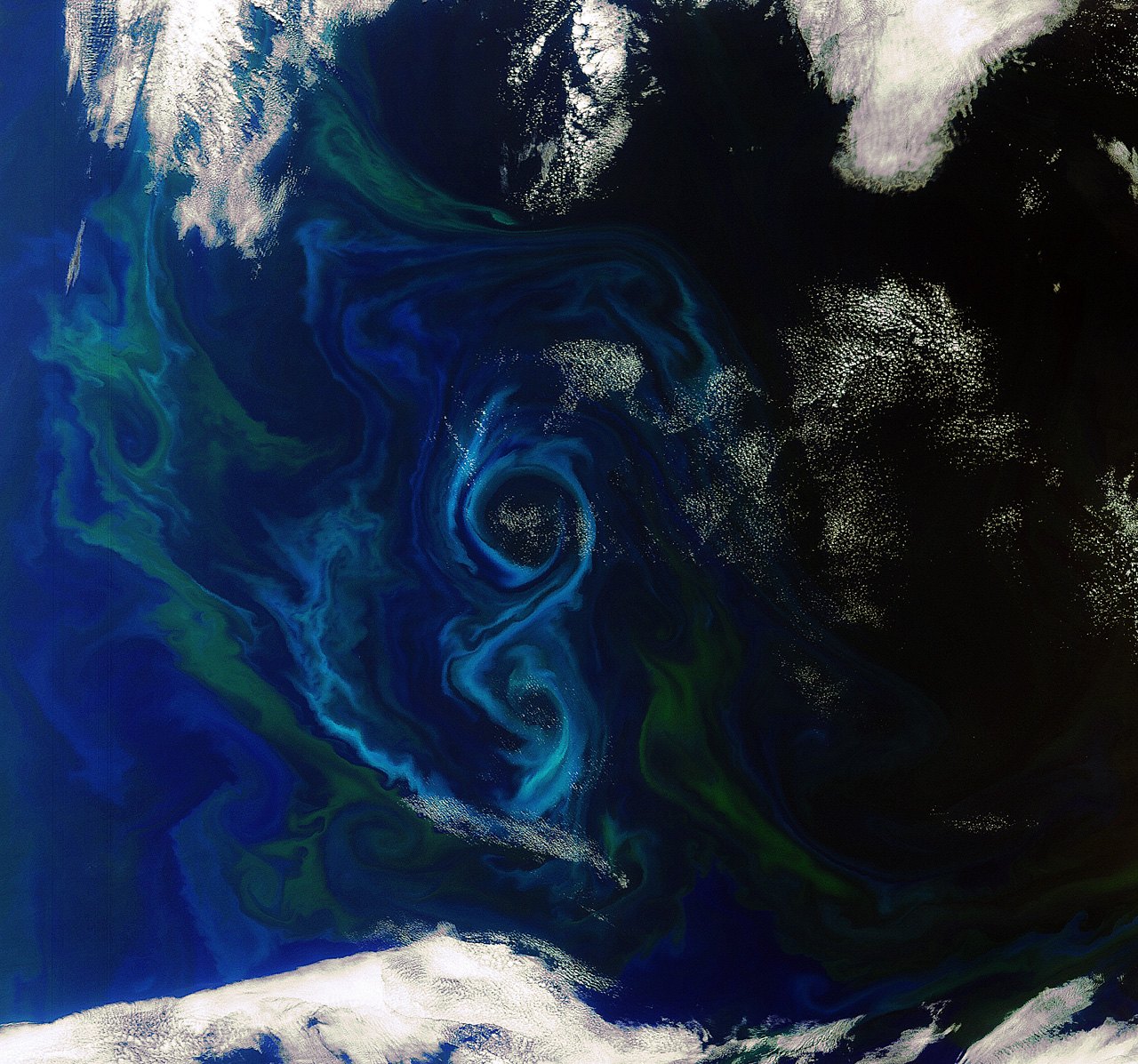
Ocean's 8: Satellite Snaps Stunning Photo of Bloom

Microscopic algae create a bright blue figure 8 in a new photo snapped by a European Earth-observing satellite.
Photosynthesizing micro-organisms called phytoplankton created the figure 8 in the south Atlantic Ocean, about 360 miles (600 kilometers) east of the Falkland Islands. The European Space Agency's Envisat spacecraft acquired the image on Dec. 2, 2011.
Such oceanic algal blooms are common in the Southern Hemisphere's spring and summer, when upwelling brings minerals from deeper waters to the surface, researchers said. Phytoplankton depend on these minerals, and the organisms proliferate as a result.
Different types and quantities of phytoplankton produce blooms of different colors, such as the blues and greens seen in the new image. By analzying such satellite pictures, scientists can monitor blooms and get an idea of the species involved.
Some algal blooms can be toxic, poisoning fish and other marine animals on a large scale. When they occur in coastal waters, such harmful blooms are often referred to as "red tides," and they can affect fisheries and human health.
Phytoplankton form the base of the marine food chain, and they play a huge role in the removal of carbon dioxide from the atmosphere and the production of oxygen in the world's oceans. So scientists are keen to monitor these tiny organisms, to get a better idea of ecosystem health and to monitor possible impacts of climate change.
The 8.8-ton Envisat spacecraft, which launched in 2002, is the largest non-military Earth-observing satellite ever built. The $2.3-billion craft carries a suite of 10 different instruments, with which it monitors the planet's land, oceans, atmosphere and ice caps continuously.
Sign up for the Live Science daily newsletter now
Get the world’s most fascinating discoveries delivered straight to your inbox.
Envisat snapped the new photo with its Medium Resolution Imaging Spectrometer (MERIS), an instrument that measures the solar radiation reflected by Earth. MERIS images have a resolution of 1,000 feet (300 meters).











